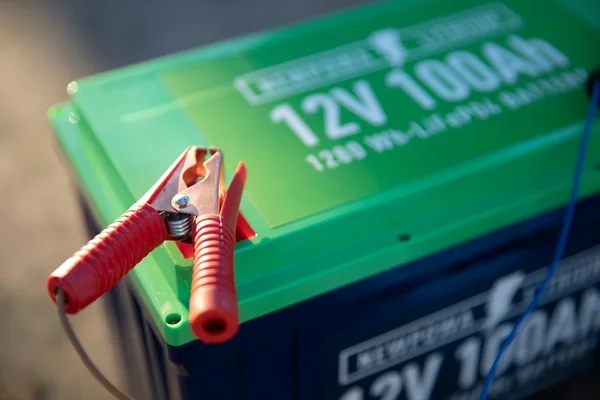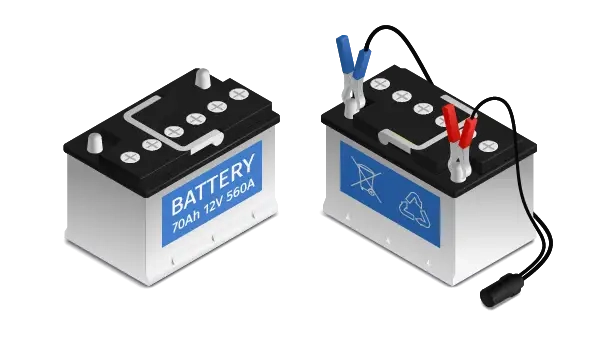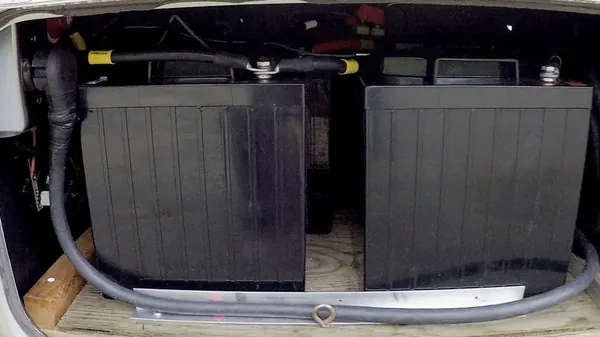Understanding Battery Ratings: A Boater’s Guide to Amps and Amp-Hours
Have you ever wondered why your boat’s battery seems to drain faster than expected? Understanding the basics of amperes and ampere-hours can help you manage your boat’s electrical system more effectively. Yet they are often mixed up or misunderstood. Let’s dive into what these terms mean and how they can help you manage your boat’s electrical system more effectively.
Understanding Marine Batteries
Batteries are the lifeline of your boat’s electrical system, powering everything from navigation lights to your fridge and onboard electronics. Whichever battery you’re dealing with, whether used as a house bank or to start up your engine, it’s essential to grasp two key concepts: amps and amp-hours. These specifications help you understand each battery’s capabilities and limitations, ensuring you can manage your boat’s power needs effectively.

What Are Ampere-Hours?
Definition: Ampere-hours (often called amp-hours) measure an intrinsic characteristic of your battery: its capacity. It tells you how much electricity it can store and deliver over time.
Analogy: Think of ampere-hours as the size of the “fuel” tank. A larger tank can hold more fuel. A battery with a higher amp-hour rating can store more electricity. This capacity determines how long your battery can supply power before you need to recharge.
Relevance: Amp-hours are essential for understanding how long your battery can run your boat’s electrical devices. Just like planning your fuel for a long journey, this information ensures you have enough energy for your intended use.
Fun Fact: The official unit of electric charge is the coulomb (C), which equals an ampere-second. Thus, 1 Ah = 3600 C. However, for practical purposes, when dealing with batteries of hundreds of Ah, that would mean measuring your battery's capacity in very large numbers. Hence the widespread used of amp-hours.
What Are Amperes?
Definition: Amperes, often referred to as “amps,” measure the flow rate of electrical current. In other terms, amperes indicate how much electricity is moving through a circuit at any given moment. This is mostly determined not by your battery but by what you power with that battery.
Analogy: Think of amperes as the rate of fuel flowing through a pipe. The higher the flow rate, the faster the fuel is pumped in or out. Just as the flow rate determines how much fuel passes through the pipe per second, amperes measure how much electrical current is flowing through a wire. A higher ampere rating means a greater flow of electricity, which means you are powering devices that require more energy.
Speedy Side Note: Just like knots are nautical miles per hour, amperes already have the time-ratio built-in. Thus, we're not talking about amperes per second or per hour. Amperes are a "speed" unit in and of themselves.
Relevance: If you have equipment that requires a high current to operate, you need a battery and wires able to deliver that much current without overheating or losing efficiency. For instance, a windlass which might routinely draw 100 amps, whereas a fridge might draw 10 amps. Despite your windlass requiring an important current, it will only run for a short period of time, though. Whereas your fridge might draw less current but operate around the clock. This makes for a nice transition towards our next section: relating amps and amp-hours.
Relating Amperes to Ampere-Hours
By now, you probably understand that amps and amp-hours quantify your electrical system in different yet related ways. Ampere-hours measure how much electrical energy is stored, while amperes measure the rate of electrical flow. To put it simply, amps tell you how fast electricity is being used at any given moment, while ampere-hours tell you how long the battery can sustain that usage.
Practical Example: Imagine you have a boat with a battery rated at 100 Ah. You want to power a device that draws 10 amperes. Using the amp-hour rating, you can calculate that the battery will last approximately 10 hours (100 Ah / 10 A = 10 hours). This calculation helps you manage your power consumption and avoid running out of energy unexpectedly.

The Most Common Misconception
Let’s now tackle possibly the greatest misunderstanding: thinking that ampere-hours are amperes per hour. Instead, let’s use another analogy to illustrate the correct relation between amps and amp-hours.
Imagine your battery is an electric vehicle, rated with a given range. Let’s say you can do 200 miles before recharging. If you travel at 10 knots, the battery will last for 20 hours. At 5 knots, the battery will last for twice as long: 40 hours. Those knots, that speed, are the equivalent to amps in our analogy. They’re a speed unit in and of themselves, without having to include “per hour” in them. Just like we don’t say “knots per hour”, there’s no need to say “amperes per hour”.
Calculating the other way around, if you’re going to need to travel at 10 knots for 10 hours, you’ll need a range of 10×10 = 100 miles. Similarly, if you’re going to need to draw 10 amps for 10 hours, you’ll need a capacity of 100 amp-hours.
So there you go, amp-hours are your “range”. That’s why you’ll see battery capacity given in amp-hours, written as Ah, and sometimes as A⋅h or A×h, but never as A/h.
Tip: Don’t Use Up the Full Capacity of Your Battery
Another frequent mistake is assuming that you can use the full capacity of a battery without any issues. In practice, it’s recommended to use only about 50% of a lead-acid battery’s capacity to prolong its lifespan. For example, if you have a 100 Ah battery, try to use only 50 Ah before recharging. Using up beyond 75-80% of your battery capacity will effectively “kill” it in no time. Rather than enjoying hundreds, if not thousands of cycles, your battery might be seriously damaged in a few tens of cycles, so beware! And in order to fully master this, you really need to know the “range” (or capacity) of your battery, measured in amp-hours.

Ready to Make the Most of Your Battery?
Understanding the difference between amperes and ampere-hours is essential for managing your boat’s electrical system effectively. Amps measure the flow rate of electricity (its “speed”), while amp-hours measure the battery’s capacity (its “range”). Now that you understand the difference between amps and amp-hours, take a moment to review your boat’s electrical system. Are you making the most of your battery’s capacity? Share your tips and experiences with fellow boaters on our social media!
